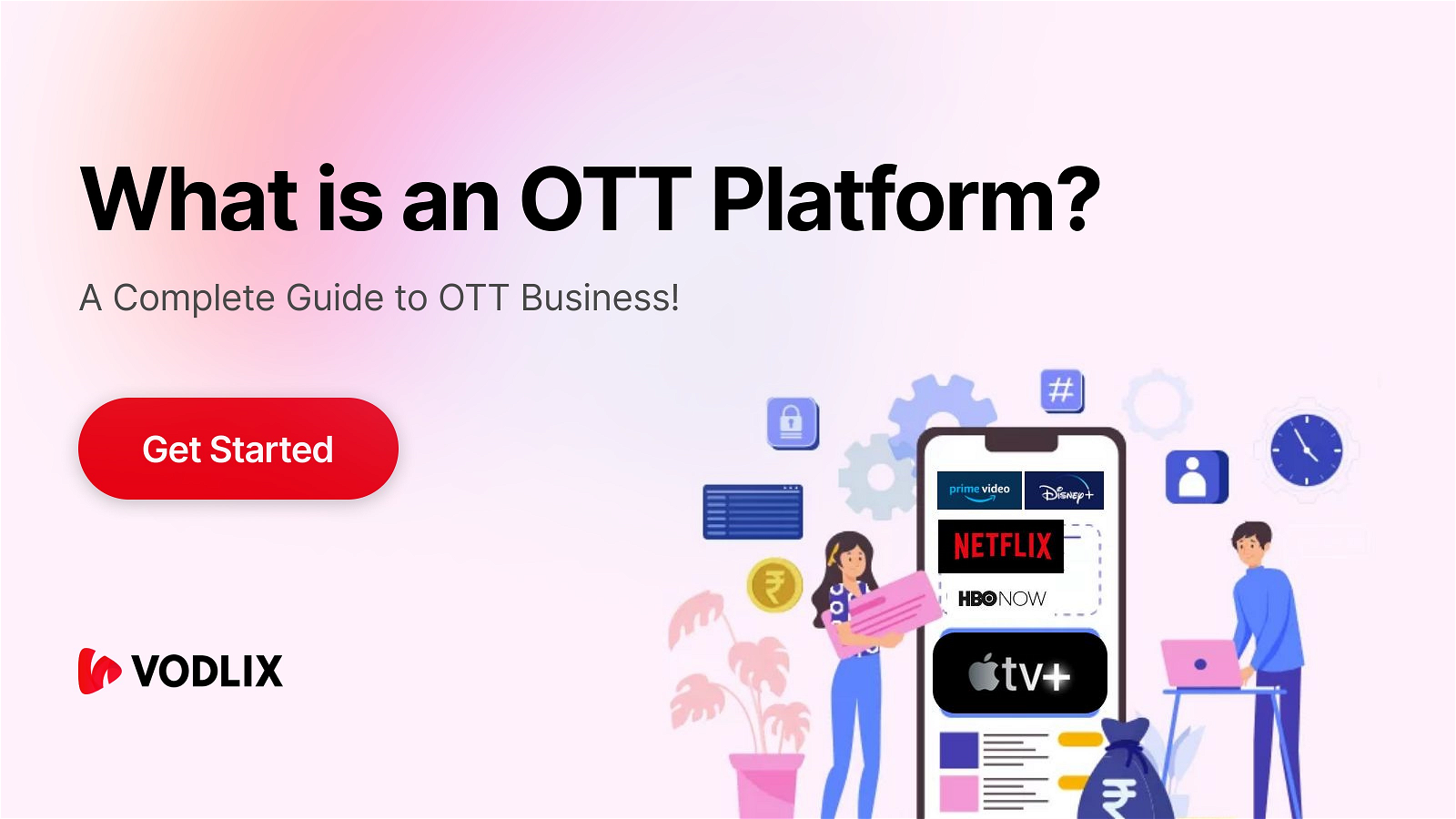First of all, let’s talk about what OTT is. OTT stands for Over-The-Top. It simply means any media content (such as streaming services, video platforms, or apps) that is delivered directly to the viewer over the Internet instead of traditional broadcast methods. It lets users access their favorite shows, movies, and videos at any time and on any device. When we talk about Over-The-Top (OTT) content, we're referring to media that is delivered directly to viewers via the Internet, without the need for cable or satellite subscriptions. OTT platforms have become increasingly popular because they provide a convenient and flexible way to watch media. It has made streaming content on various devices like smartphones, tablets, smart TVs, and gaming consoles super easy and feasible.
Some well-known examples of OTT services include Netflix, Hulu, Disney+, Amazon Prime Video, and YouTube. OTT content offers a wide range of options, including original series, movies, documentaries, and even live sports events. Not only this, these platforms also provide personalized recommendations based on your viewing habits so you can discover new content that aligns with your interests. Overall, OTT has revolutionized how we consume media, providing more freedom and flexibility in choosing what, when, and how we watch our favorite shows and movies.
Both OTT (Over-The-Top) and IPTV (Internet Protocol Television) involve delivering media content over the Internet yet there are some key differences between the two. OTT refers to the delivery of media content directly to viewers via the internet, bypassing traditional broadcast methods. This means that users can access content on-demand, at any time, and on various devices e.g. Netflix, Hulu, and Amazon Prime Video. On the other hand, IPTV delivers television content over the Internet using Internet Protocol (IP) networks. It involves a dedicated IPTV service provider that delivers live TV channels, on-demand content, and sometimes even interactive features to users through an internet connection.
Essentially, IPTV is a subscription-based service that requires a set-top box or compatible device to access the content. One of the main differences between OTT and IPTV is how the content is delivered. OTT services use public internet connections and can be accessed using apps or websites while IPTS relies on dedicated networks to deliver content and often requires specialized equipment or software. Another difference lies in the types of content available. While OTT platforms offer a wide range of media content, including movies, TV shows, and original series, IPTV on the other hand, primarily focuses on live TV channels and video-on-demand libraries provided by the service provider. In short, OTT is a broader term that covers various streaming services, while IPTV specifically refers to TV content delivered over IP networks through a dedicated service provider. Each has its advantages and features, catering to different preferences and viewing habits.
The first question that comes to mind after knowing about OTT platforms is Netflix or YouTube OTT platforms. The answer is yes. Netflix is undoubtedly an OTT platform as it allows users to stream movies, TV shows, and other forms of entertainment directly over the internet, bypassing the need for traditional cable or satellite television. YouTube also, is also an OTT platform. While it is widely known as a platform for user-generated content and video sharing, it also offers a variety of original programming and live-streaming options, making it a popular choice for entertainment. Both Netflix and YouTube have revolutionized the way we consume media, offering ease and a wide range of content just a few clicks away.
OTT platforms have the potential to significantly boost the growth of Video-on-Demand (VOD) businesses as they provide a wider audience reach. By offering your VOD content through an OTT app, you can reach a massive audience beyond the limits of traditional TV viewership. The best part is that OTT platforms are accessible on various devices like smartphones, tablets, smart TVs, and streaming devices, allowing viewers to access your content anytime, anywhere.
OTT platforms offer personalized user experience providing recommendations based on viewing habits and preferences. By assessing user data, you can offer tailored content suggestions to keep viewers engaged and enhance their user experience. This feature can help retain existing users and attract new ones too.
OTT apps offer diverse monetization models such as subscription-based services, pay-per-view, or ad-based content. This allows VOD businesses to choose the model that suits their revenue goals. Also, targeted advertising can generate additional revenue streams. Besides this, OTT platforms have global accessibility that allows VOD businesses to reach international markets as well. By reaching a wider audience, VOD businesses can experience substantial growth by expanding their user base and generating revenue from previously untapped markets.
Another feature that helps in growth is analytics. OTT apps provide comprehensive analytics and insights into viewer behavior, engagement, and preferences. These statistics can help VOD businesses make informed decisions about content strategies, marketing campaigns, and user retention initiatives, leading to improved growth and user satisfaction. By leveraging the power of OTT apps, VOD businesses can boost their growth potential, expand their audience, personalize the user experience, and explore new monetization opportunities. It's an exciting time for VOD businesses to embrace the world of OTT platforms.
Try Vodlix's free trial to get hands-on experience with all these features!







